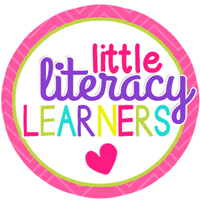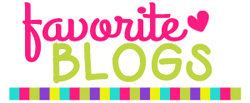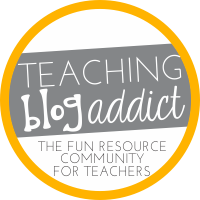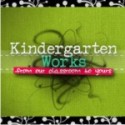As a reading teacher, I work with many kindergarten students who come to school having little to no exposure to the alphabet. So in addition to building their critical phonemic awareness skills, I spend a lot of my time exposing them to letters.
The first place I like to start with my kiddos is with the
ABC Song and an alphabet chart.
The first place I like to start with my kiddos is with the
ABC Song and an alphabet chart.
We begin by singing the traditional melody of the ABC Song because many of the children are familiar with it. (However there always seems to be a child or two who is not, so the extra practice and reinforcement is generally helpful to all.) As we sing the song, we point to each letter of the alphabet. This can be challenging at first, especially for the little ones who do not yet realize the relationship between the letters they are speaking and the letters in print. It is important to slow the song down so that each letter can be heard, especially the L-M-N-O-P.
We use many different tools for this activity, including fun pointers, our own fingers, alphabet strips, and alphabet charts. As the students become more proficient, we use different ABC songs and gradually transition into reciting the alphabet (removing the melody and pausing at the end of each row), while pointing to each letter.
Seems pretty simple, doesn't it? Alphabet charts provide so many opportunities for teachable moments!
I like working with alphabet charts in this manner for two main reasons:
First, this helps to build understanding of the organization and basic features of print as they follow the letters from left to right and top to bottom. (Sound familiar to anyone?) Not only are they improving their ability to recognize and name the upper and lower case letters of the alphabet, but they are tracking print from left to right (understanding directionality), tracking print from the end of the line to the beginning of the next (return sweep),
and pointing to individual letters (using one-to-one correspondence). These are big skills for our little literacy learners!
Secondly, this activity provides the students with a strategy to use to help them figure out unfamiliar letters on their own. Almost every classroom environments are rich in print. Every classroom in our building has the alphabet posted and most students have the alphabet printed on their name tags at their seats. So as long as they have the alphabet in front of them and can recite or sing the ABC Song as they point to the letters, they will have a means to name unknown letters.
Here is a FREE Alphabet Chart to share with you! To help our little literacy learners develop return sweep, you will see that I alternated the bee and the butterfly for each row.

We use many different tools for this activity, including fun pointers, our own fingers, alphabet strips, and alphabet charts. As the students become more proficient, we use different ABC songs and gradually transition into reciting the alphabet (removing the melody and pausing at the end of each row), while pointing to each letter.
Seems pretty simple, doesn't it? Alphabet charts provide so many opportunities for teachable moments!
I like working with alphabet charts in this manner for two main reasons:
First, this helps to build understanding of the organization and basic features of print as they follow the letters from left to right and top to bottom. (Sound familiar to anyone?) Not only are they improving their ability to recognize and name the upper and lower case letters of the alphabet, but they are tracking print from left to right (understanding directionality), tracking print from the end of the line to the beginning of the next (return sweep),
and pointing to individual letters (using one-to-one correspondence). These are big skills for our little literacy learners!
Secondly, this activity provides the students with a strategy to use to help them figure out unfamiliar letters on their own. Almost every classroom environments are rich in print. Every classroom in our building has the alphabet posted and most students have the alphabet printed on their name tags at their seats. So as long as they have the alphabet in front of them and can recite or sing the ABC Song as they point to the letters, they will have a means to name unknown letters.
Here is a FREE Alphabet Chart to share with you! To help our little literacy learners develop return sweep, you will see that I alternated the bee and the butterfly for each row.
I also created some letter cards and letter matching/identification worksheets to go along with the alphabet charts.
You can find them here:
(Here is the link for my TPT shop.)
Here are some links to other letter matching/identification activities I have made to go along with the Fall that include alphabet charts:
You can find them here:
(Here is the link for my TPT shop.)
Here are some links to other letter matching/identification activities I have made to go along with the Fall that include alphabet charts:






















